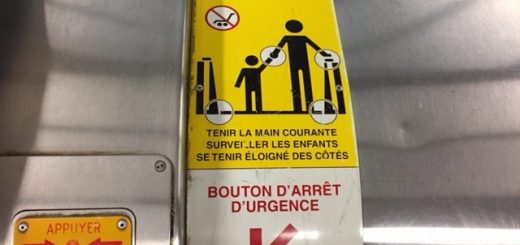Reasonable Repair of Rural Roadways: Fordham v Dutton-Dunwich
On December 11, 2014, the Ontario Court of Appeal (“ONCA”) released its decision in Fordham (Litigation guardian of) v Dutton-Dunwich (Municipality), 2014 ONCA 891 [Fordham]. The issue in the appeal was whether the trial judge misapplied the standard of care that must be met by a municipality in fulfilling its duty of reasonable repair of a public roadway. In making its determination, the court provided an interesting analysis on whether local practices on rural roadways should be considered when determining a municipality’s standard of care.
Facts and Judicial History
While driving on a rural road at night in January 2007, 16-year-old Andrew Fordham came to an intersection with a stop sign. He saw no cars approaching and decided to ignore the stop sign. He drove through the intersection at 80 km per hour. The road curved and the car crashed into a concrete bridge.
Fordham sued the municipality under section 44 of the Municipal Act, 2001 for the non-repair of the road. He claimed it had breached its statutory duty because it failed to post a sign warning about the road’s curve.
The trial judge accepted Fordham’s argument. In her judgment, she held, “it is local practice in this rural area for drivers to go through stop at stop signs and the defendant [municipality] knew that.” The trial judge believed the curve was a “hidden hazard” and found the intersection required more than a stop sign to give ordinary rural motorists reasonable notice of the hazard. She apportioned liability for Fordham’s damages at 50% to Fordham for negligently failing to stop and 50% to the municipality.
The Standard of Care
As mentioned above, the issue in the appeal is whether the trial judge misapplied the standard of care that a municipality must meet in fulfilling its duty of reasonable repair.
According to the Justice Laskin, a municipality’s standard of care has been “thoroughly canvassed” by the caselaw. In Deering v Scugog (Township), 2010 ONSC 5502 [Deering], the court found a municipality has a duty to prevent or remedy conditions on its roads that establish an unreasonable risk of harm for ordinary drivers exercising reasonable care. The court went on to define the ordinary driver:
The ordinary motorist includes those of average range of driving ability – not simply the perfect, the prescient, or the especially perceptive driver, or one with exceptionally fast reflexes, but the ordinary driver who is of average intelligence, pays attention, uses caution when conditions warrant, but is human and sometimes makes mistakes.
Further, Deering held that municipality’s duty of reasonable repair does not extend to making its roads safer for negligent drivers:
It is not the law in Canada that the duty of road authorities goes beyond the duty to keep their roads in reasonable repair for the ordinary driver exercising reasonable care, to include drivers who, for instance, do not pay attention, driver at excessive speeds, drive too close to the vehicle in front and who are otherwise negligent.
On the night of the incident, the stop sign was clearly visible. A driver who stopped at the sign (or even slowed to 50 km per hour) would have adequate time to navigate the curve. As a result, Laskin held that Fordham was driving negligently and the municipality had not breached its duty to keep its roadways in a reasonable state of repair.
Rural Roadways
In making its determination, the ONCA was highly critical of the trial judge’s bifurcation of the standard of care to accommodate rural and non-rural drivers. As indicated above, the trial judge held that the municipality was aware that rural drivers do not always stop and stop signs and as a result, the municipality was required to provide more than a stop sign to give ordinary rural motorists reasonable notice of a hidden hazard.
Laskin rejected the bifurcation for two reasons. First, the rural practice of not stopping at stop signs amounted to negligent driving and according to Waldick v Malcolm, [1991] 2 SCR 456: “No amount of general community compliance will render negligent conduct ‘reasonable’.” Second, the trial judge’s creation of two “ill-defined” categories of drivers is at odds with the uniform set of rules of the road that is established under the Highway Traffic Act (“HTA”).
This criticism of a lower court’s differentiation of the rural use of roadways is reminiscent of the ONCA’s earlier decision in Matheson v Lewis, 2014 ONCA 542, which overturned a finding that an unmodified all terrain vehicle owned by a farmer and used in farm operations does not fall within the HTA exception for “self-propelled implement of husbandry” and therefore could be driven on a roadway without insurance.
In both decisions, the lower courts attempted to bend the law to allow plaintiffs to receive damages where they suffered devastating injuries performing activities that are commonplace in their rural communities. In both cases, the ONCA resisted this urge to find an equitable remedy.
Conclusion
While Fordham has made it clear that municipalities will not be forced to adapt their standard of care to local conditions, it nevertheless poses an interesting policy question: should Ontario’s rural municipalities, anticipating local practices that can cause devastating injuries, enact policies that protect residents from those injuries (regardless of the resident’s negligence)?








Join the conversation